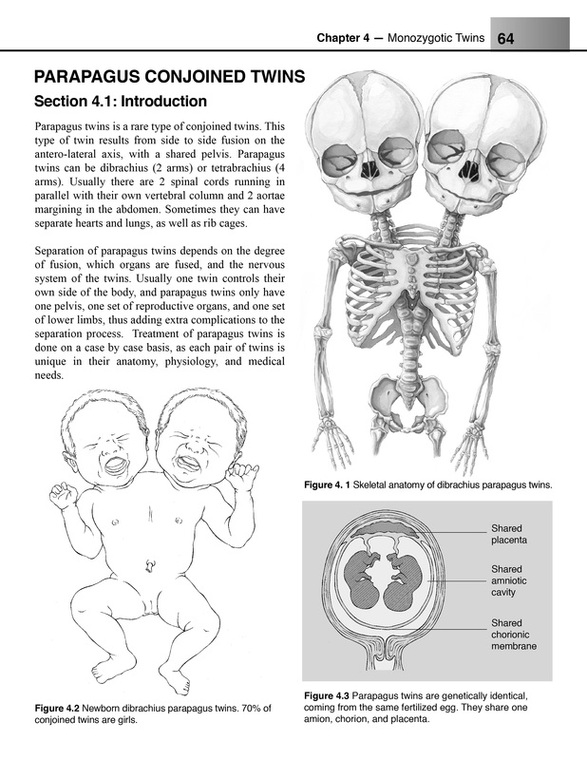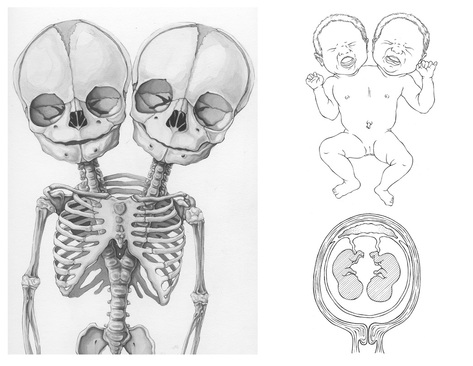|
DESCription
|
PROCESS WORK
|
Once I was happy with the rough sketches, a clean line version was made. The twin skeleton was done in ink wash and the other two illustrations were done with pen and ink. They were then scanned into Adobe Illustrator. I did research and wrote a brief description of parapagus twins to accompany the drawings, and I lastly I figured out a layout that worked and resembled that of a textbook.
|
ReferencesAPSA Family Site | Home. (n.d.). APSA Family Site | Home. Retrieved December 1, 2013, from http://www.pediatricsurgerymd.org/AM/Template.cfm?Section=Resources_for_Parents&ContentID=4080&template=/CM/ContentDisplay.cfm
Başaran, S., Güzel, R., Keskin, E., & Sarpel, T. (201). Parapagus (dicephalus, tetrabrachius, dipus) conjoined twins and their rehabilitation. The Turkish Journal of Pediatrics, 55, 99-103 . DICEPHALUS PARAPAGUS CONJOINED TWINS. (2013, December 1). Medical Channel -. Retrieved March 31, 2014, from http://www.medicalchannel.pk/past-issues/volume-18/supplement/436-dicephalus-parapagus-conjoined-twins.html Facts About the Twins. (n.d.). University of Maryland Medical Center. Retrieved December 1, 2013, from http://umm.edu/programs/conjoined-twins/facts-about-the-twins Hari, S., Sharma, R., Gupta, A. K., Das, C., & Singal, A. K. (2004). Magnetic resonance imaging of parapagus twins.European Journal of Radiology Extra,51(1), 25-29. JCDR - Journal of Clinical and Diagnostic Research. (n.d.). JCDR - Journal of Clinical and Diagnostic Research. Retrieved December 2, 2013, from http://www.jcdr.net/article_fulltext.asp?issn=0973-709x&year=2011&month=August&issue=4 Kaufman, M. (2004). The embryology of conjoined twins. Child's Nervous System,20(8-9), 508-25. Tiwari, A., Naik, D., Khanwalkar, P., & Meghana, M. (2013). DICEPHALIC PARAPAGUS – TRIBRACHIUS – A CASE STUDY. International Journal of Anatomy and Research, 1(2), 26-28. |
|
|





